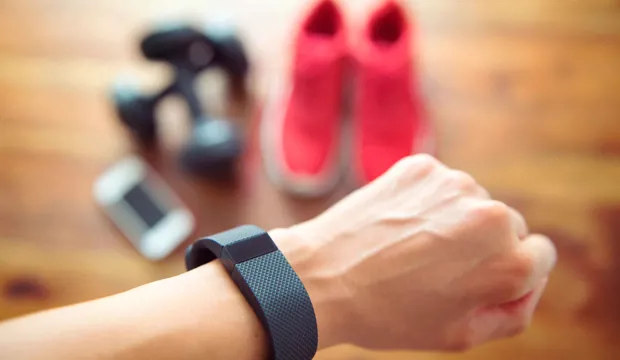
Pedometer design
Discuss the design of a step counter from the perspective of the engineer and the customer
Walking is an excellent form of exercise that most people can participate in. The average person walks 3000-4000 steps per day. The National Health Service in the UK has set a challenge for each person to walk 10,000 steps per day; This can be counted using a step counter or pedometer.
In this unit of learning, learners will integrate a BBC micro:bit based programmable system into a complete and commercially viable step counter product that will aid people taking part in this challenge.
Activity introduction
In this activity, learners will think about existing step counters. They will discuss their designs from the perspective of both the engineer and the customer for the product.
This resource could be used as a starter activity with ‘Design a prototype step counter’ as the main activity. It is an ideal exercise for learners to analyse existing products and consider the roles of both the customer and the engineer in the product design process.
How long will this activity take?
This simple starter activity will take approximately 10 minutes to complete.
What is the BBC micro:bit?
This activity is one of a series of resources to support using the BBC micro:bit in Design and Technology lessons.
The BBC micro:bit is a compact, pocket-sized programmable device designed to introduce coding and digital creativity to young learners. Packed with sensors, buttons, and a LED display, the micro:bit enables hands-on exploration of coding concepts through its user-friendly interface.
Created as part of the BBC’s “Make It Digital” initiative, the micro:bit empowers students to bring their ideas to life by programming animations, games, and interactive projects. Its versatility and ease of use make it a valuable tool for teaching computational thinking and fostering innovation among beginners, encouraging them to engage with technology and develop essential digital skills.
The engineering context
This subject serves as an excellent focal point for instructing students about programmable components and the incorporation of embedded intelligence within products. These aspects align with the core elements outlined in the 2014 curriculum for Design and Technology at key stage 3.
Furthermore, it presents a valuable opportunity to leverage the BBC micro:bit within the classroom environment, enhancing learners’ product integration abilities.
Suggested learning outcomes
Upon completing this task, students will be able to analyse and deliberate upon current products from the standpoint of the product engineer and the customer. Additionally, they will comprehend the distinct roles of individuals engaged in the design and production processes.
Download the free activity sheet below!
All activity sheets and supporting resources are free to download, and all the documents are fully editable so that you can tailor them to your students and your schools’ needs.
The activity sheet includes teacher notes, guidance, helpful web links, and links (where appropriate) to the national curriculum in the four devolved UK nations; England, Northern Ireland, Scotland and Wales.
Please share your classroom learning highlights with us @IETeducation




